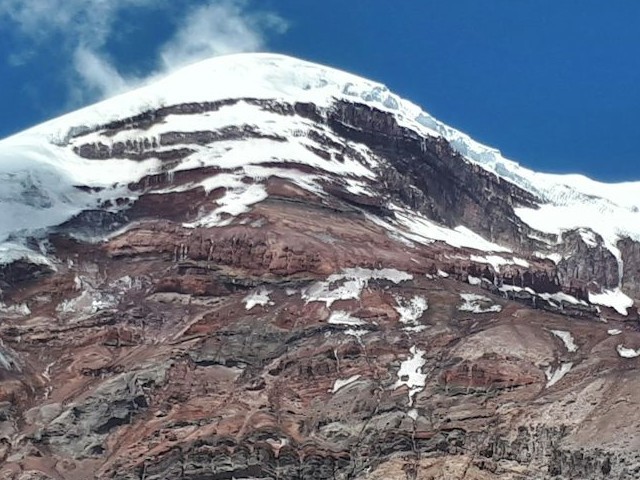Capturing the Roof of Africa: Understanding Kilimanjaro Drone Photography Regulations
Introduction: The Sky-High Art of Capturing Kilimanjaro
Mount Kilimanjaro is not just a mountain; it is a mosaic of scenic trails, stunning flora, and ethereal geological features, all deserving to be captured from the best angles possible. In this digital age, drone photography has revolutionized the way we perceive and immortalize landscapes. However, with great technology comes great responsibility – particularly in the form of regulations. This blog post, brought to you by Kilimanjaro Centre for Trekking and Ecotourism (KCTE), aims to guide you through the essential regulations surrounding drone photography on Kilimanjaro, ensuring that your aerial captures comply with local laws while inspiring awe and preserving nature.
Why Drone Photography on Kilimanjaro?
The Unmatched Aerial Views
Kilimanjaro, with its diverse ecosystems and dramatic altitude shifts, offers unique perspectives that are often unreachable by traditional photography. From the sprawling savannas at its base to the majestic snow-capped summit, drone cameras can sweep over these landscapes, providing breathtaking footage that does justice to the natural beauty of this Tanzanian icon.
The Importance of Compliance
While drones can fetch incredible panoramas, their usage in sensitive ecological zones like Kilimanjaro is tightly controlled. Understanding and adhering to drone photography regulations is crucial not only to respect the legal boundaries but also to contribute to the conservation efforts that help keep Kilimanjaro pristine.
Kilimanjaro Drone Photography Regulations: Navigating the Legal Landscape
Before launching your drone on Kilimanjaro, it’s imperative to be informed about the local laws that govern such activities. Here’s what you need to know:
1. Permit Requirements
All drone operators need to apply for a permit through the Tanzania Civil Aviation Authority (TCAA). This involves submitting specific details about your drone and your intended use. The approval process can take several weeks, so plan accordingly!
2. No-Fly Zones
Certain areas of Kilimanjaro are designated as no-fly zones to protect wildlife and maintain the peace of the natural habitat. It’s vital to consult with park authorities or your tour operator, like KCTE, to understand these restrictions before your trek.
3. Height and Distance Limits
There are restrictions on how high and how far you can fly your drone. These regulations are in place to avoid disturbances to wildlife and to ensure the safety of all climbers and aviators in the area.
4. Privacy and Ethics
Drone operators must also respect the privacy of other climbers and the indigenous communities living around Kilimanjaro. Always seek consent if you plan to capture footage of people or nearby villages.
Best Practices for Drone Photography on Kilimanjaro
To ensure a successful and responsible drone photography experience on Kilimanjaro, consider the following best practices:
Plan Your Flight Path
Advance planning of your drone’s flight path can help avoid restricted areas and minimize disturbances to wildlife. It also ensures that you capture all the desired shots.
Check Weather Conditions
The weather on Mount Kilimanjaro can change rapidly. Ideal conditions for drone flying are crucial not just for legal adherence but also for the safety of your equipment.
Be Prepared for Altitude
The high altitude can affect drone performance. Make sure your drone is capable of handling the thinner air, and you are prepared for any technical adjustments.
Engage with a Local Expert
Partnering with a knowledgeable tour operator like Kilimanjaro Centre for Trekking and Ecotourism (KCTE) can vastly enhance your experience. We provide updated information on regulations, assist with permit applications, and guide you to the most scenic and legal areas for drone flying.
Why Choose KCTE for Your Kilimanjaro Adventure and Drone Photography?
KCTE isn’t just a tour operator; we are enthusiasts of nature, culture, and technology. By booking your Kilimanjaro climb with us, you benefit from our experience and commitment to sustainable tourism. We ensure that all aspects of your trek, including drone photography, are safe, legal, and incredibly fulfilling.
FAQs About Kilimanjaro Drone Photography
Q1: How long does it take to obtain a drone permit for Kilimanjaro?
A1: The process can take several weeks. It’s best to apply well in advance of your planned trip.
Q2: Can I rent a drone from KCTE for my Kilimanjaro trek?
A2: Currently, KCTE does not offer drone rentals. We advise bringing your own equipment and ensuring it meets local specifications.
Q3: Are there any specific models of drones recommended for Kilimanjaro’s altitude?
A3: Drones that are robust and have a proven track record of performing well at high altitudes are recommended. Brands like DJI have models that are commonly used in mountainous terrains.
Conclusion: Elevate Your Kilimanjaro Experience with KCTE
Venturing into drone photography on Kilimanjaro opens up a world of unparalleled scenic beauty. By understanding and adhering to the local drone regulations, your aerial shots can capture the majestic essence of this towering peak without harming its natural or cultural landscape. Remember, the key to a successful drone photography experience on Kilimanjaro lies in preparation, respect for nature, and collaboration with experts.
Feel inspired to take your adventure to new heights? Book your Kilimanjaro climbing expedition with Kilimanjaro Centre for Trekking and Ecotourism (KCTE) today, and let us help you navigate the skies safely and spectacularly!
Contact KCTE to start planning your journey
Capture not just images, but memories that soar above the clouds!




